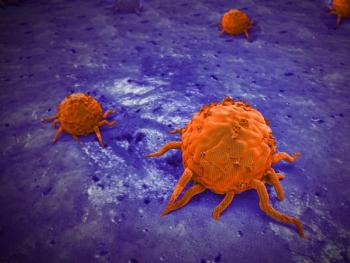
Adjuvant Chemo After FOLFIRINOX Treatment Fails to Improve Survival in Pancreatic Cancer
This study found that adjuvant chemotherapy in patients with resected pancreatic cancer after treatment with neoadjuvant FOLFIRINOX was not associated with improved overall survival.
Adjuvant chemotherapy after treatment with neoadjuvant folinic acid, fluorouracil, irinotecan, and oxaliplatin (FOLFIRINOX) was not associated with improved overall survival (OS) in patients with resected pancreatic cancer, according to results from an international, multicenter, retrospective cohort study.
However, adjuvant chemotherapy after neoadjuvant FOLFIRINOX and resection of pancreatic cancer was associated with improved survival in a subset of patients with pathology-proven node-positive disease.
“In the future, these findings should be confirmed in randomized clinical trials,” the authors noted.
For the purposes of this study, researchers updated and expanded on an existing cohort of patients undergoing resection of pancreatic cancer after FOLFIRINOX. All consecutive patients who underwent pancreatic surgery after at least 2 cycles of neoadjuvant FOLFIRINOX chemotherapy for nonmetastatic pancreatic cancer were retrospectively identified from institutional databases.
Across different subgroups, investigators evaluated the association of adjuvant chemotherapy with OS; OS was defined as the time starting from surgery plus 3 months (moment eligible for adjuvant therapy), unless mentioned otherwise
Patients with resectable pancreatic cancer, borderline resectable pancreatic cancer, and locally advanced pancreatic cancer were included in the study. However, patients with in-hospital mortality or who died within 3 months after surgery were excluded.
Among 520 patients from 31 centers in 19 countries, the median number of neoadjuvant cycles of FOLFIRINOX was 6 (interquartile range, 5-8). Of the study cohort, 343 patients (66.0%) received adjuvant chemotherapy, of whom 68 (19.8%) received FOLFIRINOX, 201 (58.6%) received gemcitabine-based chemotherapy, 14 (4.1%) received capecitabine, 45 (13.1%) received a combination or other agents, and 15 (4.4%) received an unknown type of adjuvant chemotherapy. Median OS was 38 months (95% CI, 36-46 months) after diagnosis and 31 months (95% CI, 29-37 months) after surgery.
Overall, no survival difference was observed for patients who received adjuvant chemotherapy compared with those who did not (median OS, 29 vs 29 months; univariable HR, 0.99; 95% CI, 0.77-1.28; P = .93). However, in multivariable analysis, patients with pathology-proven node-positive disease experienced improved survival with adjuvant chemotherapy (median OS, 26 vs 13 months; multivariable HR, 0.41; 95% CI, 0.22-0.75; P = .004). In patients with node-negative disease though, adjuvant chemotherapy was not associated with improved survival (median OS, 38 vs 54 months; multivariable HR, 0.85; 95% CI, 0.35-2.10; P = .73).
“The improved survival with adjuvant chemotherapy observed in patients with ypN+ disease remained after landmark analyses by excluding patients who died both 6 and 12 months after surgery, controlling for guarantee-time bias. Moreover, when separately assessing patients with ypN1 and ypN2 disease, the association with adjuvant therapy remained,” the authors explained. “However, the differential association of adjuvant chemotherapy in resectable pancreatic cancer needs to be further studied, as the interaction term within this subgroup was not statistically significant.”
Notably, this study only included the specific group of patients who eventually underwent a resection after neoadjuvant FOLFIRINOX. Patients who progressed on neoadjuvant chemotherapy or those who underwent surgical exploration but not resection were not included. Additionally, patients who died within 3 months after surgery were excluded. This, combined with the retrospective nature of this study, may have introduced an inherent selection bias.
“These choices in study design were made to maximize internal validity in an attempt to approach a valid assessment of the effect of adjuvant therapy,” the authors wrote. “As the current study is mostly hypothesis-generating (at least regarding secondary outcomes), it underlines the need for large, randomized studies on the outcome of adjuvant therapy after neoadjuvant therapy, in particular in patients with ypN+ disease.”
Reference:
van Roessel S, van Veldhuisen, Klompmaker S, et al. Evaluation of Adjuvant Chemotherapy in Patients With Resected Pancreatic Cancer After Neoadjuvant FOLFIRINOX Treatment. JAMA Oncology. doi: 10.1001/jamaoncol.2020.3537
Newsletter
Stay up to date on recent advances in the multidisciplinary approach to cancer.




















































































